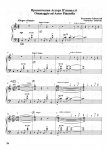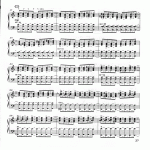A
AccoTony
Guest
Hello. I would like to ask how do I identify from sheet music which basses/chords to play? Usually there are written something like 7 (seventh chord) m (minor) and etc. But I have found notes which do not contain these signs, just plain notes and I am confused which ones to play.
Actually, in the case below, there are signs like m+m but these do not make sense for me (m+m? what ?)
So, by and large, I am questioning how could I read bass notes just from the notes itself? Not from the signs 7, m, M
I think you got the idea.

Thank you.
Actually, in the case below, there are signs like m+m but these do not make sense for me (m+m? what ?)
So, by and large, I am questioning how could I read bass notes just from the notes itself? Not from the signs 7, m, M
I think you got the idea.

Thank you.
Last edited by a moderator:


